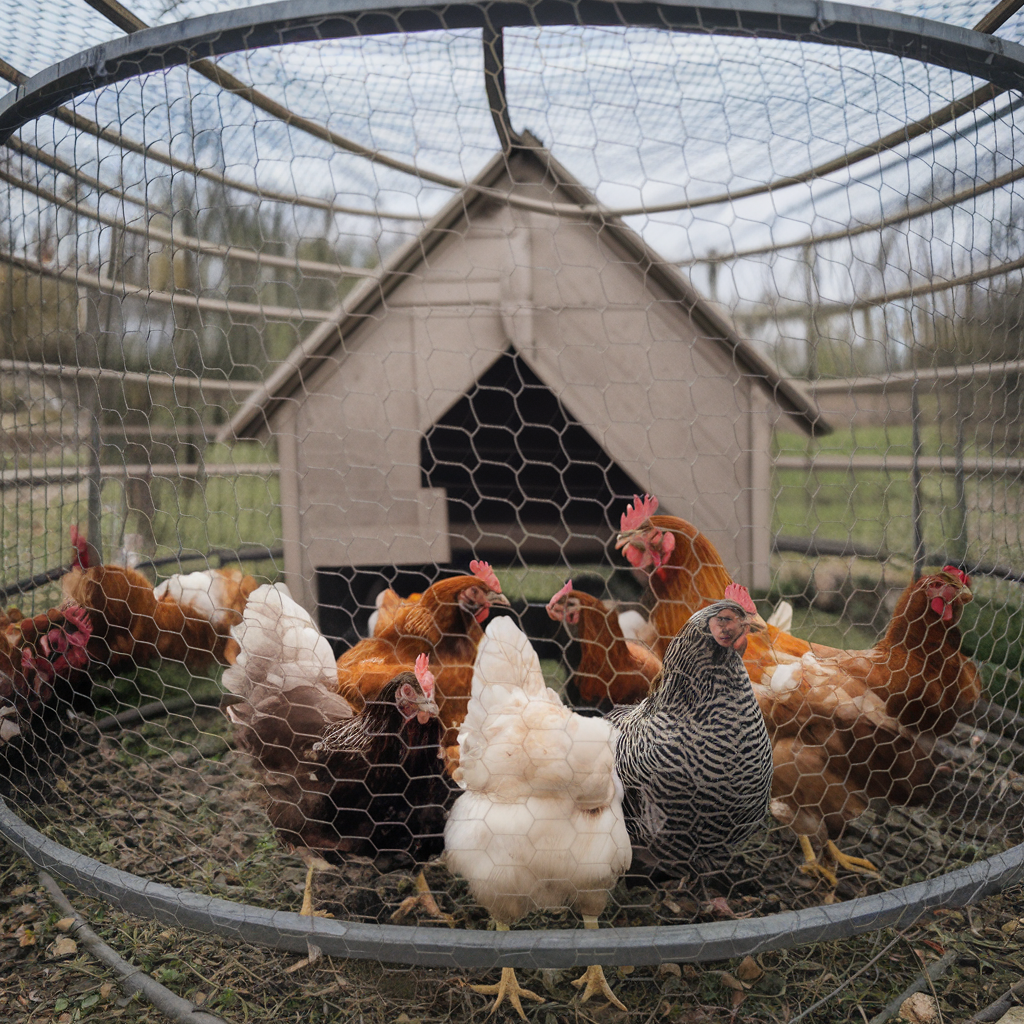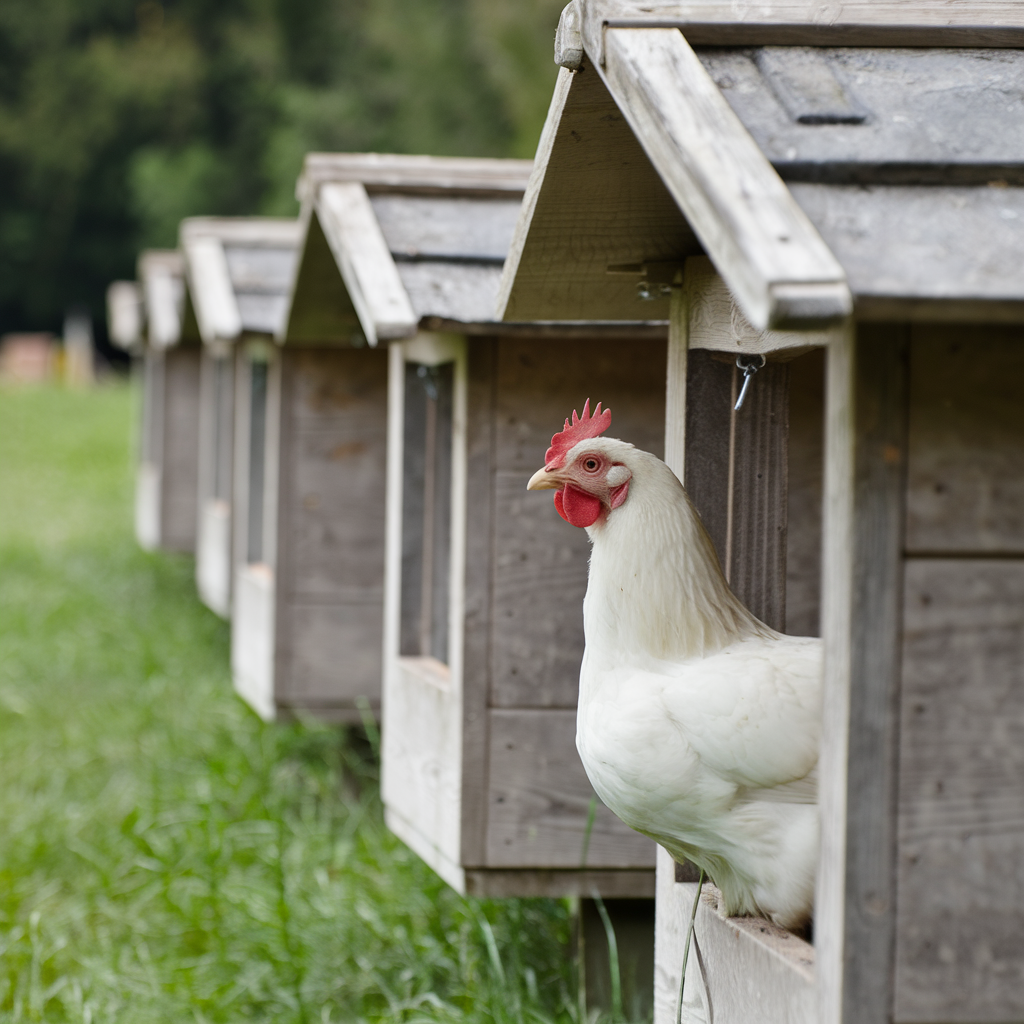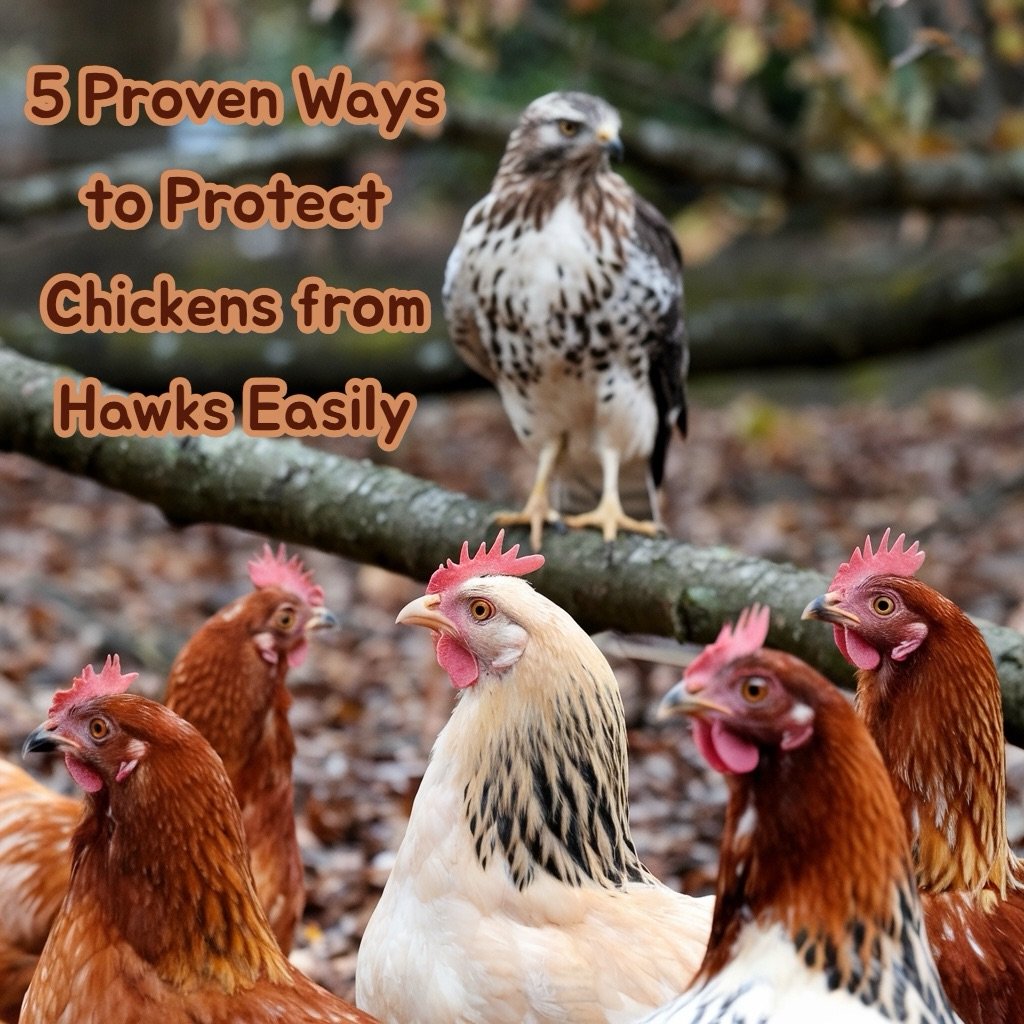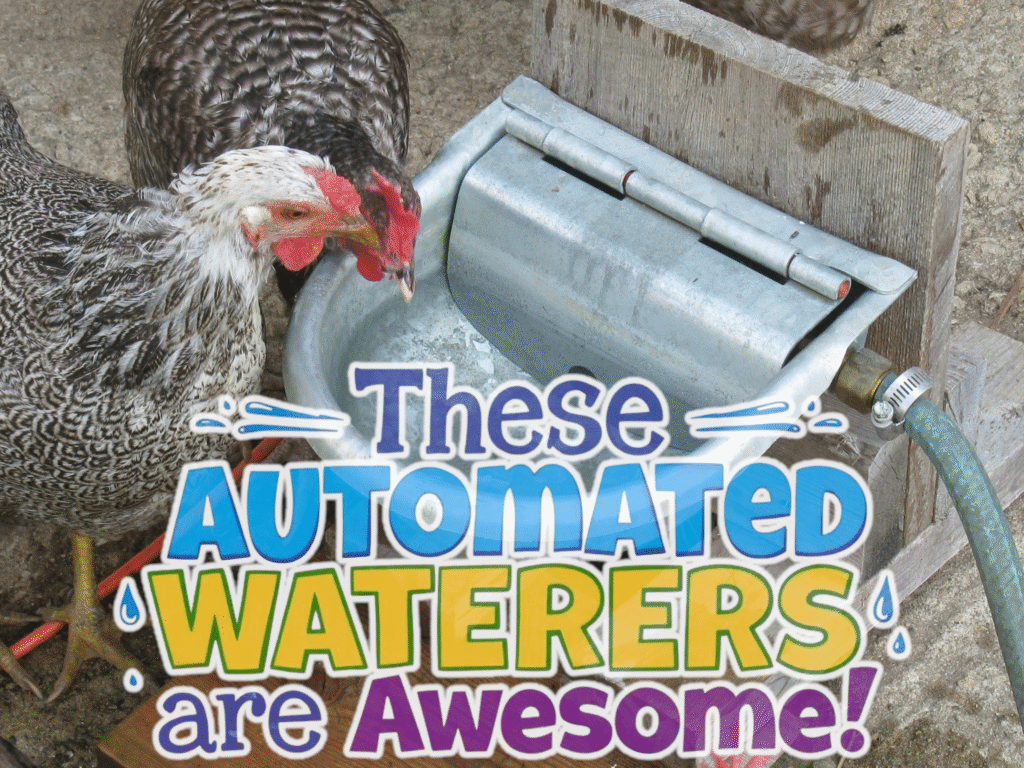What I’ve Learned (Sometimes the Hard Way) About Keeping Hawks From Your Flock
I’ve raised chickens for decades across a few different climates, and if there’s one predator that keeps me on my toes year-round, it’s hawks. They’re stunning, smart, and federally protected—which means we don’t harm them; we outsmart them. In this guide, I’ll share how to protect chickens from hawks using non-lethal, practical strategies you can implement today, with notes on what actually works long-term (and what’s just folklore).
Quick note on the law: Hawks are protected under the Migratory Bird Treaty Act in the U.S. Everything here focuses on prevention, deterrence, and habitat design—not trapping, shooting, or harming raptors in any way.
Know Your Opponent: Why Hawks Target Backyard Chickens
Patterns and timing
Understanding a hawk’s hunting behavior will help you decide how to protect chickens from hawks on your property. Most hawk strikes on my flocks have been:
- On bright, calm days with good visibility
- Between 9 a.m. and 3 p.m. (midday is prime time)
- After I moved young pullets outside or added white or light-colored birds
- When feed or water sit in the open with no overhead cover
Hawk tactics in a nutshell
- Ambush: Drop from a tree or power line straight into the yard
- Soar and dive: Circle high, then stoop fast when birds wander into the open
- Perch and watch: Sit silently nearby, waiting for an opportunity
When you grasp those tactics, how to protect chickens from hawks becomes a simple equation: limit aerial access, break up sightlines, and make your yard “not worth the trouble.”

Build Their World So Hawks Can’t Win
1) Secure, covered runs
If you want a near-zero hawk risk, cover your run. Solid roofs (metal, polycarbonate) and tight aviary netting both work. Here’s my short list for a hawk-resistant run:
- Roof: 1-inch heavy-duty poultry netting or rigid roofing panels
- Walls: 1/2-inch hardware cloth (not chicken wire) on all sides
- Height: 6–7 feet so you can stand and the birds get vertical space
- Frame: Sturdy enough to handle snow and wind; add a center ridge or hoop structure to shed loads
Netting tips that matter:
- Tension is everything—saggy nets invite swoops and tangles
- Use UV-rated netting so it doesn’t rot out fast
- Secure the perimeter to keep hawks from sneaking under edges
2) Overhead “grids” for open pens
Not ready for a fully covered run? A grid of lines can be surprisingly effective. I’ve used poly twine, paracord, and even tight monofilament (fishing line). Spacing lines in a 3–6 foot checkerboard discourages hawks from diving—most won’t risk clipping a wing. Tie bright flags or reflective tape every few feet so birds see it and you avoid tangles.
These setups aren’t perfect in a heavy snow area, but they’re a quick win while you plan a full roof. A lot of folks ask me how to protect chickens from hawks on a budget—this grid approach is one of my favorite “start today” answers.
Landscape and Layout: Hidey-Holes Save Lives
3) Give them cover where they actually hang out
Hawks pounce on open ground. Create “instant cover” zones so your flock is never more than a few seconds from safety:
- Low tunnels: Cattle panels or PVC hoops draped with shade cloth
- Portable shelters: Pallets on sawhorses, old tables, or plywood lean-tos
- Shrubs and evergreens: Berry bushes, bamboo clumps, or dense conifers
- Coop overhangs: A 2–3 foot roof lip creates a quick duck-under
Place feed and water right next to cover, not in the middle of an open lawn. If you like to range your birds because free-ranging chickens can cut feed costs by up to 50%, this layout is critical. Free-range is wonderful, but give them a shaded “safe triangle”—coop, cover, and resources in close proximity.
4) Visual clutter up high
String reflective tape, old CDs, or scare-eye balloons high and change their positions weekly. Nothing is foolproof forever, but when you’re figuring out how to protect chickens from hawks, movement and novelty buy you time. Kites shaped like falcons can work, but rotate them or hawks will ignore them after a while.
Smarter Scheduling: Win the Daylight Hours
5) Range at safer times
Midday on clear days is prime hawk time. I often shift free-range windows to late afternoon when thermals die down. Windy days can be safer too—hawks don’t love gusty ambushes. If I’m home, I’ll give them more time; if I’m out, they stay in the covered run. How to protect chickens from hawks isn’t always about gadgets—timing and supervision matter.
6) Train a recall and a “hawk drill”
My flock knows a sharp whistle means “under cover now.” I trained it by whistling, scattering scratch under shelters, and repeating for a week. Once you’ve got a recall, practice “hawk drills” every so often. It sounds funny, but that muscle memory can save birds when a shadow crosses the yard.
7) Roosters as sentries
A good rooster will sound alarms and herd hens to safety. They’re not a force field, but they buy time. If you’ve got a noisy night fellow, here’s how I keep sanity: manage lighting, bedtime routines, and coop placement—this piece on why roosters crow at night (and how to calm them) walks through what’s worked for me.
Guardian Animals: What Actually Helps
8) Dogs that are trained, not just present
A farm dog that patrols and respects the flock is one of the strongest deterrents. Introduce slowly, use a long line early on, and reward calm behavior near birds. Even the scent and activity of a dog can make a hawk choose another yard.
9) Geese as aerial alarms
Geese have excellent eyes and big voices. A bonded pair grazing alongside your flock will often spot a hawk before you do. They’re not for everyone, but they’ve helped me a lot during migration seasons when hawk traffic spikes.
Hardware and Gadgets That Actually Move the Needle
10) Covered feeders and waterers
Don’t make chickens stand exposed while they eat or drink. I mount feeders under eaves and tuck water in shade. I’m picky about water because shade covers help, but algae can thrive if you aren’t on top of it—if you’re curious, this guide to stopping algae in chicken water the easy, natural way lays out simple fixes. And the less time you spend standing in the open refilling water, the better—these automatic chicken waterers have been game-changers for me.
11) Motion deterrents
Motion sprinklers or lights won’t stop every hawk, but they add surprise. Pair them with overhead lines or netting for layered defense. Remember: how to protect chickens from hawks is about stacking small advantages so a hawk decides your coop isn’t an easy lunch.
12) Mobile tractors for young birds
Chicks and small pullets shouldn’t be loose in hawk season. A secure tractor with a covered top lets them graze safely. Move it daily for fresh grass and clean ground.

Seasonal Strategy: Winter, Snow, and Migration
13) Winter visibility cuts both ways
With leaves gone, hawks see everything. I expand covered space in winter and add more low shelters outdoors. Snow glare can confuse birds—give them straw paths between cover points. Keep water liquid and close to cover; my go-to is a heated bowl—this heated water bowl saved me (and my flock) every single freeze.
14) Migration months = extra hawk vigilance
During spring and fall migrations, I keep range time shorter and never leave birds out unsupervised on bright, calm days. You’ll see more soaring hawks then—expect them and plan around it.
Flock Management That Indirectly Cuts Hawk Risk
15) Stress resets
After a hawk scare, you may see a pause in laying or changes in flock mood. It’s normal. A comfort routine helps—quiet afternoons, treats under cover, and a secure run. If egg production dips, I triage with nutrition and light, then troubleshoot deeper—this walkthrough on why chickens stop laying and what you can do covers the big levers.
16) Health matters
Predators target stragglers. Keep birds vigorous: clean housing, fresh water, balanced feed, and grit for digestion. If you’re new, this checklist of what chickens need to survive is a great starting point. After any attack, I also watch for stress-triggered issues like external parasites—here’s the practical method that finally stuck for me: how to treat mites in chickens.
17) Color and age considerations
Light birds (white leghorns, splash varieties) are more visible to hawks in open spaces. With them, I keep range sessions shorter and shelter density higher. Chicks and small pullets? Covered tractor only until they’re full size and sharp on the recall.
What Doesn’t Work As Well As People Think
- Fake owls alone: They might spook hawks for a week, then become lawn ornaments
- Shiny objects without rotation: Movement and novelty matter—change positions
- Hanging CDs at chicken height: Put deterrents 10–20 feet up where hawks scan
- Relying on a rooster only: Great alarms, not shields
Whenever you’re deciding how to protect chickens from hawks, think in layers: sightline breaks, overhead interference, clear sprint-to-cover zones, and smart scheduling. One trick is rarely enough; three or four together make your yard a “nope.”
Emergency Response: If a Hawk Strikes
18) Stabilize the flock and tend the injured
- Move everyone into the covered run or coop
- Check for punctures (often hidden under feathers) and bleeding
- Clean wounds with saline or dilute chlorhexidine; isolate the injured bird in a warm, quiet crate
- Offer electrolytes and high-protein feed to support recovery
19) Break the pattern
Hawks remember easy wins. After an incident, I lock down free-range for 3–7 days, increase overhead cover, and change the yard’s silhouette (new tarps, different line patterns). During that reset, I also reevaluate feeder and water placement—tucking them tighter to cover and leaning more on gear that reduces my trips into the open, like a dependable auto waterer.
Legal and Ethical Notes
It bears repeating: how to protect chickens from hawks must be non-lethal. Don’t trap, poison, or shoot raptors. If a hawk becomes unusually persistent, call your local wildlife agency for guidance. Sometimes a little habitat change—removing a favorite perch, adding line grids—solves the problem without escalating.
Your Action Checklist: How to Protect Chickens from Hawks Today
- Cover your run with netting or solid roofing; tighten and secure edges
- String a crisscross overhead grid (3–6 ft spacing) above open areas
- Add low shelters every 20–30 feet: tables, pallets, hoop tunnels
- Relocate feed/water next to cover; use covered stations
- Train a whistle recall; practice a weekly “hawk drill”
- Adjust range hours to late afternoon or windy days
- Rotate visual deterrents high in the yard: reflective tape, balloons, kites
- Supervise during migration months; shorten free-range windows
- Use tractors for chicks and small pullets until they’re full-sized
- After any incident: lock down for a few days, add cover, change the yard layout
Real-World Setups That Have Worked For Me
My “Everyday Safe Range” layout
- Covered 10×20 run attached to the coop (hardware cloth + roof)
- Two 8-foot pallet shelters spaced 20 feet apart in the yard
- Overhead line grid with reflective flags over the prime grazing zone
- Feed and water under the run overhang—minimal open exposure
- Recall whistle and geese grazing nearby as early-warning alarms
My “High-Risk Season” adjustments
- Shorter free-range windows, only late afternoon and supervised
- Extra hoop tunnel with shade cloth to create a covered corridor
- Motion sprinkler near the most open approach path
- More visual clutter high up: rotated kite decoys and tape
When neighbors ask me how to protect chickens from hawks with limited time and a modest budget, I tell them: start with cover (run + shelters), add a simple line grid, and train a recall. Those three steps stop the majority of losses in most backyards.
Related Tips to Keep Your Flock Thriving
Strong, calm flocks handle stress better and bounce back faster. If you want to round out your setup, here are a few resources I personally find handy:
- Ease maintenance while keeping birds close to cover with automatic waterers
- Tackle water quality and reduce algae growth with this simple algae prevention guide
- Dial in the basics with the seven essentials chickens need to thrive
Final Thoughts From Someone Who’s Watched the Skies a Long Time
I still marvel at hawks. I also fiercely protect my birds. Both can be true. The good news is, once you understand how to protect chickens from hawks—by reshaping your yard, tightening routines, and giving your flock places to disappear—losses can go from “too often” to “almost never.”
If you’re just starting out, don’t feel you need to build Fort Knox tomorrow. Add one layer a week: a shelter here, a line grid there, a recall whistle, a smarter range schedule. Little changes add up. And if you have a tough week, take heart—we’ve all been there. With a few thoughtful tweaks and a watchful eye, your flock can enjoy the sun, scratch the grass, and still be home for dinner.
As an Amazon Associate we earn from qualifying purchases through some links in our articles.




